Hi & Wecome back!!
This week’s post is relatively short because the message is simple – to lose body fat and get healthier alter the source & types of carbs you eat.
Regular readers will know that I am not anti-carb, but anti- processed, denatured, nutrient sparse carbs. Our bodies need carbs and the micronutrient that come with natural source carbs, so the whole ‘no
carb’ thing does not make any sense to me except for specific and strategic short term use – but that is another post.
So here is the message short & sharp – replace starchy, processed carbs with vegetables and fruit. Yep just like your Mum & her Mum and her… used to say. They were & are right – fruit & veggies are the best sources of carbs and the co-factors and micronutrients that our bodies need for peak efficiency.
Vegetables should be the main type of carb you eat with fruit also essential but insmaller quantities because of the effects of fructose.(quick side note fructose from fruit is not a problem except in a society that add high fructose corn syrup to damn near everything – this creates a sensitivity to fructose that leads to various not so good halth effects. Fruit is good but in moderation…)
Here’s why you choose these natural sources:
All of the carbs that you eat end up as glucose (blood sugar) after your body has processed them, taken out the vitamins & minerals, the antioxidants & co-factors; the fibre and leaves only its preferred energy source.
So after processing by your body; a piece of bread, an apple, a tomato, some potato or broccoli; a spoonful of sugar, a soda, a strawberry or even an Oreo are turned into your body’s main fuel source, blood sugar.
In other words – any carb, no matter its source, ends up in your blood stream as glucose.
What makes a spectacular difference to your health and body fat is the rate at which the carbs you feed your body are processed and metabolised.
Tim Ferriss talks about ‘Fast’ & ‘Slow’ Carbs in his book the ‘4 Hour Body’ and diabetics (and savvy folk) are familiar with the Glycemic Index which lists carbs as being high ‘GI’ (fast to break down to glucose) and low ‘GI” (slower to break down to glucose).
Simple / Fast carbs are those with a high GI and tend be starchy carbs. They are easy to spot – they have been processed and often are white in colour (no not cauliflower – but white flour products, white rice, white sugar, etc etc – all processed, starchy high GI foods) Some fruits fall into this category as well – especially dried fruits. Simple carbs are converted more rapidly into glucose for a quick energy boost.
Complex / Slow carbs are those with high levels of fibre, generally a low GI rating, can often be imagined as coming from a farm or an orchard and tend to come in many colours with green being the predominant one. Oats is an example of a processed carb that is low GI (Steel cut, NOT instant). Complex carbohydrates take longer to break down into glucose and therefore offer a more sustained supply of energy for your body.
This sustained energy supply is why you must choose complex carbohydrates as your main carb source. Blood sugar spikes from simple, fast carbs cause insulin spiking and fat storage. Slow carbs do not.
However this is a simplistic view – ‘Fast’ versus ‘Slow’ carbs, high ‘GI’ versus low ‘GI’ the truth is more complex than this. It always is when we begin to look at the processes of our bodies – they overlap & interact at so many levels that simplistic approaches can be dangerous at worst or just misleading at beast.
Why? Well take watermelon. It is a high GI food but eating it actually has a negligible effect on glucose levels – even in large quantities.
Watermelon may have a high GI, but compared to other carb foods you might eat, it doesn’t have as much carbohydrate because it is mainly water.
There is a small amount of carbohydrate in watermelon. This amount is processed into glucose very quickly making it a high-GI food, but because there is so little of it, it just doesn’t have much of an effect on your blood glucose levels, so in terms of impact, it is very low. This impact of the amount of carbs in a food is called the ‘Glycaemic Load’.
This is an important point – it is the amount of carbohydrate in a food that matters, not just the speed at which it is processed into glucose. We know that all carbs are turned into glucose – so it follows that the more carbs in a food, the more glucose that will be produced from it. Again this by itself is not clear guide – what is needed is a method that takes into account the amount of carbs in a food and the speed at which those carbs are metabolised into glucose by our body. This measure is the Glycaemic Load (GL) which considers the amount of carbohydrate in a food as well as its GI. Both of these factors acting together determine the blood glucose response from any food.
To work out glycaemic load (GL), multiply the GI x the grams of carbohydrate, then divide by 100.
For example:
- 1 cup of watermelon: (GI of 72 x 9 grams carb) / 100 = 6.5.
- 1 cup of sweetcorn (GI of 37 x 32 grams carb) / 100 = 11.8.
Your body’s glucose response to the same amount of these 2 foods will be quite different because the amount of carb present in each. The differing amount of carbohydrate affects the glycaemic load. 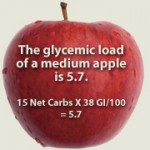 Portion size is another way to affect the glycaemic load of a food. For example, one cup of sweetcorn has a GL of 11.8 but half a cup only has a GL of 5.9.
Portion size is another way to affect the glycaemic load of a food. For example, one cup of sweetcorn has a GL of 11.8 but half a cup only has a GL of 5.9.
What this shows is that using the GI by itself is okay as a rough rule of thumb, but it does not give you the full story. You need to also take into account the amount of carbohydrate in the food you are eating. For this reason, the GI is most useful when choosing between foods with a high percentage of carbohydrate and but becomes fairly irrelevant when foods contain a low percentage of carbohydrate.
However the carb content should be taken one step further – the amount of carbs in a food that comes from fibre also affects your body’s speed of metabolising carbs to glucose. The Atkins people introduced the idea of ‘Nett’ carbs years ago and this was arrived at by subtracting the amount of fibre in a food from its total carb count. The remaining amount is the ‘Nett’ carbs and you apply the GL to this.
This is important because foods with a high carb% that also contain a high fibre % will convert to glucose to more slowly than high carb / low fibre foods. This also highlights that when a food has a low GI it does not mean you can eat huge volumes of it.
Bottomline – fibre counts – big time! And fibre comes from lightly to unprocessed foods, not factory processed ones.
So when considering a low- or high-GI food we need to also take into account how much carbohydrate a food contains and how much of that is fibre.
Bread, rice, pasta and cereals are mainly carbohydrate so choosing low-GI varieties makes a difference – but only if they are high fibre varieties.
All fruit and vegetables are fantastic for health because they are packed full of antioxidants and nutrients. But some fruits are low in fibre but high in carb content and therefore should be eaten sparingly.
The biggest reason to switch from a diet full of starchy carbohydrates like bread, pasta, and rice to a diet with more fibrous, leafy ones like vegetables is the calories involved.
By ‘swapping’ out starchy, fast, simple carbs and replacing them with slow, complex, fibrous ones you will create a significant drop in calories. To lose fat we know we need to create a calorie deficit so fewer calories with more stable blood sugar will certainly assist in leading to a significant drop in body fat.
Just like it’s wise to moderate fats because they are very calorie dense, starchy carbohydrates like bread and pasta are more calorie dense (and definitely more nutrient sparse!!) than fibrous, carb sources like vegetables in general and leafy ones in particular.
What you want to do is eat a lot of calorie sparse, nutrient dense foods that makes us feel full without over-doing it with the calories. (See my earlier post – February I think – on achieving healthy satiety)
For effective, permanent fat loss, I feel it’s important to choose foods that are in high fibre are nutritionally dense but low in calories. This way you do not feel hungry because you are full from the fibre of the carbs, you don’t feel too deprived as the improved nutritional impact will help you cope with any cravings that arise from a ‘fast’ carb withdrawal. You will still be eating a lot of food but you’ll be getting a lot fewer calories.
Vegetables & most fruits offer this luxury. You can eat a lot in volume, but you just don’t get a lot of calories in return. (Unless you deep fry them, drench them in honey or drown them in butter on a consistent basis…)
This high volume, low calorie luxury doesn’t exist with starchy carbohydrates.
A small serving of starchy carbs like pasta, bread, and rice is still high in calories.
For example, a 1/4-cup of rice has approximately 150 calories, but you can eat an entire bag of carrots or 8 or more cups of broccoli and still have ingested fewer calories than if you the 1/4 cup of rice.
Look I love bread as much as the next person, especially Sunday morning brunch with a fresh loaf from the local bakery, and I am not suggesting that you stop eating grains, pasta, oatmeal or rices. I am however suggesting that you eat less of them, swap them out for more vegetables, reduce their serving size at your meals and add some leafy green stuff!
Supplement smaller servings of simple, fast carbs with more vegetables.
Your body absolutely needs carbohydrates. Carbs are the body’s main source of glucose. Your brain cannot function without glucose; in fact, you’d die without blood sugar.
So to start cutting excess calories from your diet, start to limit the amount of starchy carbs like bread, pasta, rice, oatmeal, bagels, that you eat and swap them instead for more vegetables like broccoli, carrots, green beans, spinach. lettuce, peas, and so on.
You’ll lose fat. Your skin will improve and so will a lot of other health indicators.
Be well, see you next time.

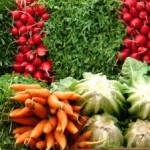

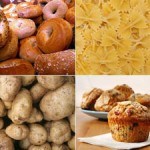
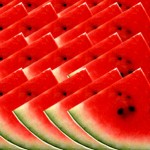
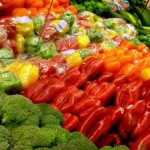
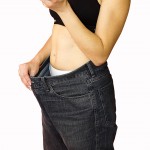
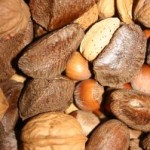
Pingback: Roofers
I waetnd to spend a minute to thank you for this.